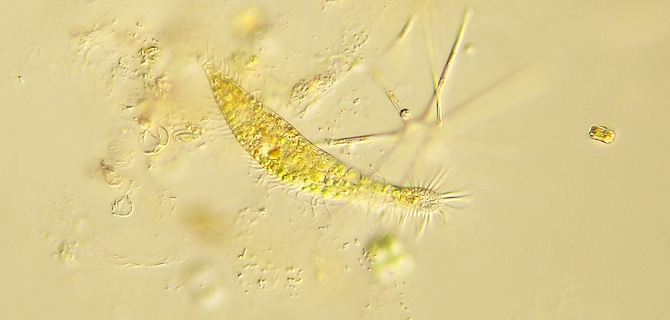What are ciliates?
Ciliates are unicellular eukaryotes (protists) bearing cilia and having two different nuclei (macro- and micronucleus). Their sizes range mainly between 10 – 1.000 µm and they preferably feed on small algae or bacteria. Ciliates are well adapted to their environment and short generation times make them ideal indicator organisms for biotic or abiotic changes in their surrounding water.
Adaptations to a planktonic lifestyle
(examples)
- spherical or ellipsoid shapes as well as long cilia facilitate floating in the water
- with specific jumping bristles some ciliates can escape predators (e.g. planktonic crustaceans)
- attachment to algal colonies or detritus flocks (because of this ‘surface enlargement’ the ciliates cannot easily be ingested by predators)


